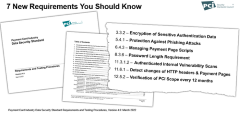Developer Portal
2.2 PaywayWS Specific Terms
2.2.1 Payway’s Virtual Terminal: PaywayWS
Payway’s virtual terminal, PaywayWS, allows you to manually enter credit card data or collect payment information for card-not-present transactions. With PaywayWS , you simply log into your account online to securely and efficiently handle payments.
- Manually enter credit card sales directly on your computer
- Manage different types of payments, including in-store orders, mail orders or invoices.
- Protect against fraudulent transactions with address verification service (AVS) and card verification value (CVV)
- PaywayWS is a fully PCI-compliant and PA-DSS-certified payment application
2.2.2 Company
Company is a configuration of a Payway customer on PaywayWS. It includes data about the customer such as contact information.
2.2.3 Division
Each payway customer has one (1) or more divisions. Each payment account is stored under a given division. Divisions are also used in setting up user security for the PaywayWS logon accounts.
2.2.4 Source
A source identifies where a transaction originated for a PaywayWS customer. Each division has one (1) or more sources. The source determines which merchant account or originator will be the target of the transaction.
2.2.5 Account Token
A string that represents a payer account on PaywayWS. This could be a credit card account or a bank account for direct debit transactions. ALL accounts entered into PaywayWS generate an account token. Always store the account token instead of the account data on your system.
2.2.6 Session Token
For recurring transactions, transaction or account reading or updating, a session token is required. This is obtained by executing a getPaywaySession request. PaywayWS clients typically acquire a session, then using that session token, stream a batch of recurring payments using account tokens.
2.2.7 Request Token
A token that represents a specific transaction on PaywayWS. For web-based transaction where users enter their account information ( either directly or by some other method such as a wallet), The first step is to setup up the transaction with Payway ( see examples below). This setup request generates a request token. The request token is usable ONLY for that request, which means the user can not manipulate the amount or other payment information. The request token is loaded onto the payment page, and when the user authorizes the payment the account information along with the request token is forwarded to PaywayWS to complete the transaction.
2.2.8 Dev
PaywayWS sandbox. This is where you will send transactions during development of your application.
2.2.9 Test
A staging system which replicates the live system. This can also be used for regression testing new releases after you have gone into production with PaywayWS.
2.2.10 Live
The PaywayWS production systems.


